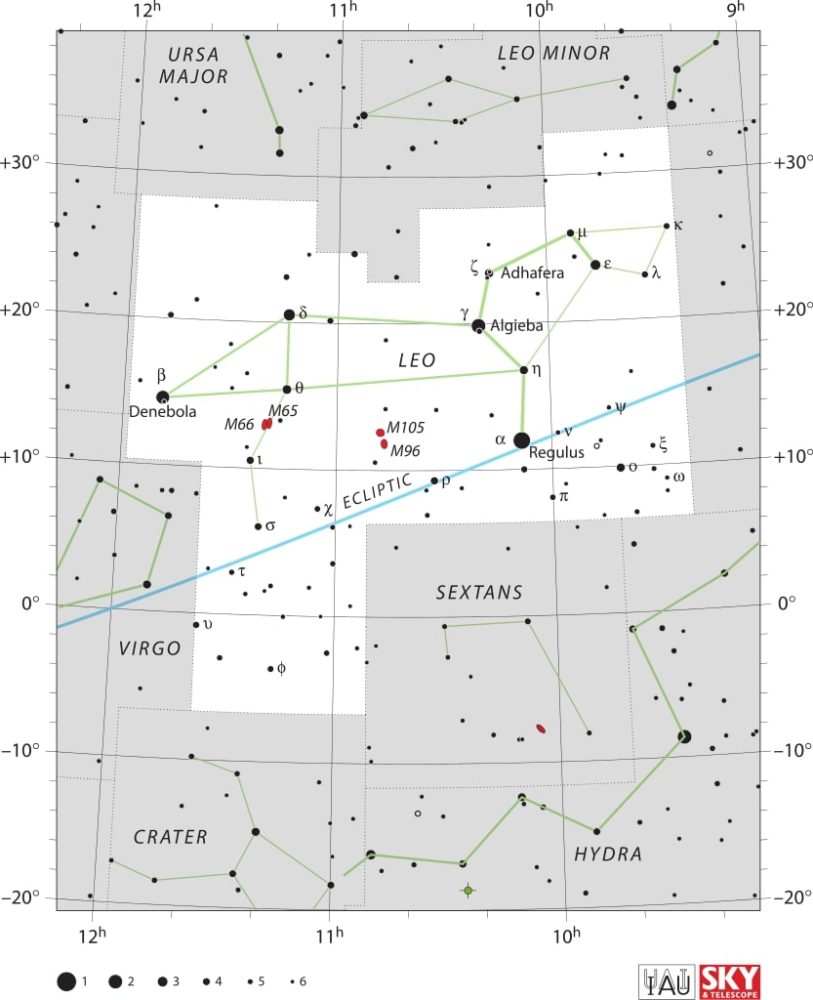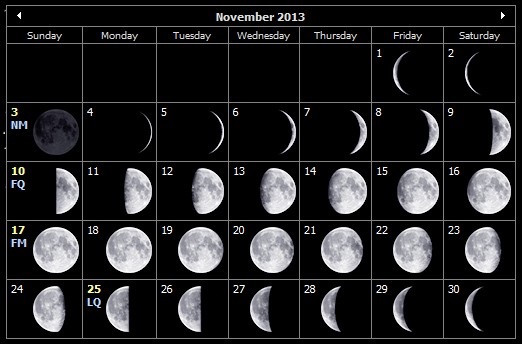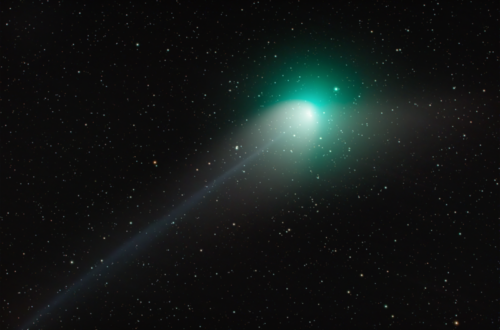Monthly Stargazing Calendar for November 2013
Looking for the November 2025 stargazing calendar?
Earlier this month there were two major astronomical events: a hybrid solar eclipse on November 3rd and the Taurids meteor shower peak on the night of November 4 and 5. What is a hybrid solar eclipse you may ask? Well, this kind of eclipse happens when the Moon is almost too close to the Earth to completely block the Sun. To some parts of the world it will appear as a total eclipse, while it will appear annular to others.
If you missed those two events, don’t worry, there are two more coming up this month!
On the night of November 16 and 17 we will witness the peak of the Leonids meteor shower. The Leonids are an average shower, and can produce an average of up to 15 meteors per hour at the peak, but some meteors can also be visible between November 6 and 30. This shower is unique in that it has a cycle lasting 33 years and at the peak of said cycle there are hundreds of meteors per hour instead of the mere 15. That last time this peak occurred was in 2001. The Leonids are produced by dust grains left behind by comet Tempel-Tuttle, which was discovered in 1865. Unfortunately this year the glare from the full moon will block many of the meteors so it is important to view from a dark location away from city lights in order to be able to see some of the brightest ones. Meteors will appear to radiate from the constellation Leo, but can appear anywhere in the sky.
Would you like to be notified of stargazing events?

On November 28 the newly discovered comet ISON will make its closest approach to the sun. Orbital calculations indicate that it will travel less than 1.2 million km above the sun’s surface, making it a true “sungrazer”. As early as August and September, the comet has begun to be visible in the morning sky in dark locations with the aid of a telescope. In October it started to be visible to the naked eye and will continue to get brighter until November 28. If the comet survives its close encounter with the sun, it will be visible in the early morning and early evening sky and could become nearly as bright as the full Moon, which is more than enough to be visible during daylight hours. Sights like this are quite rare, in the order of once in a lifetime events, so I highly recommend to make some time this month to witness it!

Comet ISON as seen by Hubble on 9 October 2013.
Photo credit: NASA, ESA, and the Hubble Heritage Team (STScI/AURA)
Moon phases
As you know, the moon has a big impact on the visibility of celestial bodies in the night sky. So here are the moon’s phases for this month:

Positions of the planets this month
Mercury: The closest planet to the Sun can be seen at dawn and dusk travelling across the constellation of Virgo. This planet, being the closest to the Sun, will appear to move quickly in the night sky and its position will change in the following weeks.
Venus: The sister planet can be seen in the constellation of Sagittarius. Just like Mercury, Venus can only be seen at dawn and dusk.
Mars: The red planet can be seen in the constellation of Leo.
Jupiter: The gas giant is visible in the constellation of Gemini. Jupiter can easily be spotted with the naked eye, even in highly illuminated cities.
Saturn: The ringed giant can be seen with the naked eye between the constellations of Virgo and Libra.
Uranus: The gas giant can be seen between the constellations of Pisces and Cetus with the use of a telescope.
Neptune: The blue giant requires a telescope pointed in the constellation of Aquarius in order to be seen.
Major astronomical events next month
- December 13, 14 – Geminids meteor shower peak
- December 21 – December solstice
- December 21, 22 – Ursids meteor shower peak
See also:
- Previous month’s calendar: Stargazing Calendar for October 2013
- Next month’s calendar: Stargazing Calendar for December 2013
Would you like to receive similar articles by email?





